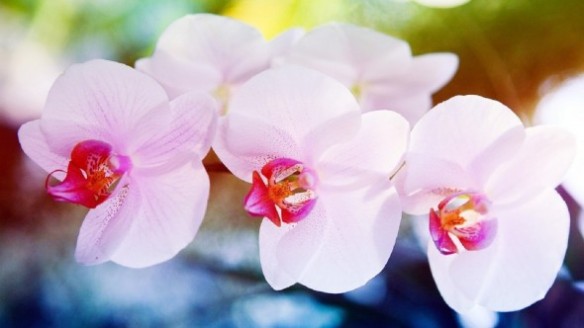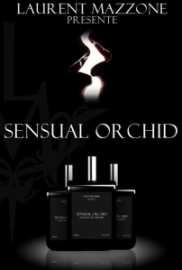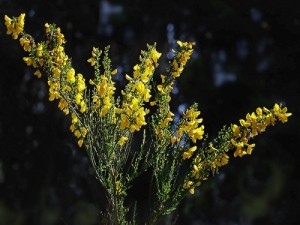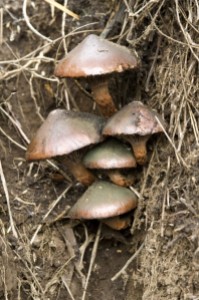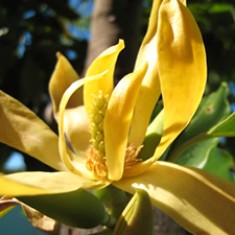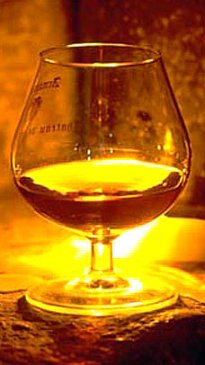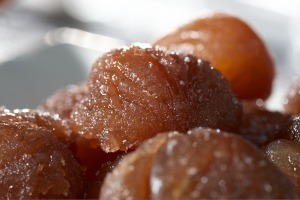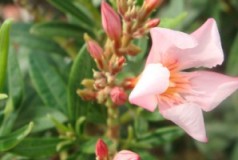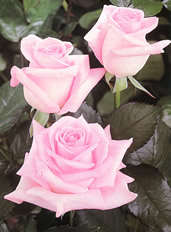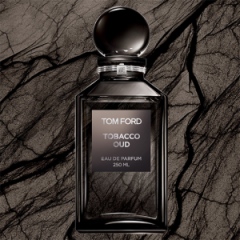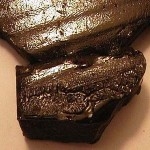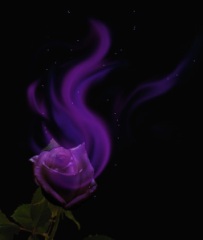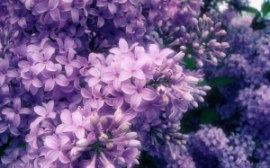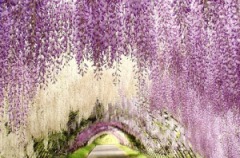Tom Ford has added Mandarino di Amalfi and Costa Azzurra as two new, summer fragrances to join his extremely popular Neroli Portofino. The trio now comprise The Neroli Portofino Collection, but are also part of the higher priced Private Blend line. Both fragrances will be released in early July, so they are not yet available in most stores. Today, I’ll look at Mandarino di Amalfi, and save Costa Azzurra for the next review.
Tag Archives: Tom Ford
Tom Ford Private Blend Champaca Absolute
A heady, rich, utterly opulent mix of creamy, white and yellow, tropical flowers whose velvety petals are infused with syrupy fruits and sprinkled with a touch of boozy liqueur, before being dipped in dark tea and bergamot, and then nestled in a vanilla cocoon. That’s the essence of Tom Ford‘s Champaca Absolute, a very lush eau de parfum that is part of his Private Blend line. The perfume was released in 2009, and is centered around the eponymous flower, Champaca, an Asian cousin to magnolia. Champaca has an aroma that is a mix of magnolia and ylang-ylang, but it can also have a tea-like aspect with fruited nuances. All those sides are highlighted in Champaca Absolute in a very bold, very sweet, very heavy mix that is not for the faint of heart.
Tom Ford’s description for the fragrance, as quoted by most retail sites, appears to be the following:
A floral oriental composition that is pure and provocative. With its sensuous heart of champaca, the magnolia-like flower that inspired it, this intoxicating nectar heightens the senses with notes of Tokajii wine and cognac as it warms the skin with vanilla bean, amber and sandalwood.
According to Luckyscent, the notes in Champaca Absolute include:
Tokaji [plum] wine, cognac, bergamot, magnolia champaca, orchid, violet, jasmine, vanilla, amber, sandalwood and marron glacé.
Fragrantica, however, has a slightly different list which is notable for the inclusion of dyer’s greenwood, a variety of the broom shrub that smells of hay. They state:
the top notes are cognac, bergamot and dyer’s greenweed [or broom]; middle notes are champaca, orchid, violet and jasmine; base notes are vanilla, amber, sandalwood and marron glace.
I think the complete, total list would be a combination of the two, as I definitely detect both the broom and the plum wine.
Champaca Absolute opens on my skin with an intense, concentrated blast of fruited, plummy, liqueured wine and cognac brandy, followed by tropical champaca. The flower smells of: buttery magnolia; custardy, banana-like ylang-ylang; apricots; and a heavy, syrupy, fruited sweetness. Lurking deep below the heady, over-the-top, floral richness is an almost leathered, smoky nuance. Sticky, cooked, plum molasses swirls in the floral air from the Tokaji wine, while cognac is sprinkled all on top. You don’t smell as though you were dunked in a vat of alcohol, but there is a very pronounced liqueured aspect to the fruited sweetness.
I’ve noted a number of times in the past how Tom Ford fragrances can smell very different depending on how much you apply, and Champaca Absolute is no exception. When I applied a lot (amounting to a little over 1/3 of the vial, or the equivalent of 2 big sprays from an actual bottle), there was a definite vein of smoky darkness underlying the heady, sensual flowers. However, when I applied a lesser quantity (about 2 big smears, amounting to a small spray from a bottle), the notes which accompanied the champaca at the opening were quite different. There was no smokiness or leather, little plum, but a lot of orchid infused with vanilla.
Orchid has a very interesting, clear, sweet, delicate smell that can vary in its aroma depending on which variety of the flower is used. Here, in Champaca Absolute, it smelled delicately dewy, liquidy, and like floral nectar that was thoroughly infused with both ylang-ylang and vanilla. The overall effect was to remind me of one of my favorite, opulent florientals, LM Parfums‘ Sensual Orchid. It is a scent with a couple of notes in common with the Tom Ford, namely, orchid, boozy tonalities, ylang-ylang, jasmine, vanilla, and resins.
However, the two fragrances differ quite a bit in their focal points and overall feel. Champaca Absolute is dominated by the very unctuous, magnolia-like flower, not the lighter, clearer orchid. The Tom Ford fragrance feels more oriental, ambered, heavy, syrupy sweet, and fruited. In contrast, LM Parfums’ Sensual Orchid feels less flat on my skin, less potentially oppressive or weighed down, and much more purely floral. Its tropical touch comes from coconut, not from the custardy, buttery magnolia flower. It lacks bergamot, along with hay or tea tonalities, but includes mandarin orange, almonds, peony, and neroli. At the same time, its boozy note is substantially lighter and more refined. It’s also much fresher and less sweet at its core, and thereby, less potentially cloying in nature. I have to be honest, I much prefer Sensual Orchid’s take on the lush, over-the-top, narcotic, floriental genre.
Beyond the minor Sensual Orchid resemblance, a lower dosage of Champaca Absolute also yields other differences from the version I saw with a higher amount. The main difference is that the accompanying notes rise to the surface much sooner, particularly the bergamot, jasmine, and the broom’s hay-like note. There is a more obvious, profound, and long-lasting citrus tonality to the scent, along with increased dryness from the broom. There is also a stronger touch of earthiness in the base that verges on something like mushrooms or truffles, though it is subtle, so its impact is quite relative as a whole. (Still, it’s enough to make me think of Tom Ford‘s Black Orchid which has a truffle note in the base.) Apart from all that, and as noted above, Champaca Absolute does not feel resinous, smoky or dark at the lower dosage; and both the booziness and the fruity undertones are also much weaker. In short, if you apply less Champaca Absolute, you’ll get more of a sweetly floral-magnolia scent that has very different, very altered levels for the rest of its accompanying elements.
Regardless of the amount that you apply, both versions end up at the same place, sooner or later, so I’ll just stick with discussing the Champaca Absolute I experienced with the larger quantity. This version is fully centered on the magnolia-like flower, with not much interference from the orchid or anything else at first, other than the very fruity accords. The plum wine is powerful during the first 10 minutes, much more so than the boozy cognac on my skin, although both are simply different form of liqueured fruits. At the same time, there is a definite suggestion of something almost like Davana, a rich Indian flower that smells like apricot-y ylang-ylang. There is almost no fresh bergamot to lighten up the notes, no hay, and little vanilla.
10 minutes into its development, Champaca Absolute slowly shifts. The jasmine arrives on the scene, imparting an additional layer of syrupy sweetness to the bouquet. The plum wine takes a small step back, the boozy cognac softens a little, and the perfume feels even richer. There is the first hint of the champaca’s tea-like facet, along with the tiniest whisper of bergamot, though both are very muted at this point. Slowly, very slowly, Champaca Absolute turns more floral in focus. The boozy elements retreat to the sidelines after 30 minutes, and the delicate nectar of the orchid arrives to coat the richer, more unctuous, buttery champaca. There is a touch of broom now as well, but its subtle dryness does little to leaven or cut through Champaca Absolute’s richness.
In the base, there is a tiniest whisper of earthiness, though it never smells like marrons glacé or iced chestnuts to me. Interestingly, at the lower dosage, Champaca Absolute reflected a more noticeable, almost truffle-like, mushroomy nuance in its foundation, but it’s not so apparent now. By the same token, the tea-like elements and bergamot feel much weaker at the higher dosage, too. Frankly, the lighter, more minor notes have very little chance of standing up to the power of the heavy floral cocktail. Everything but the flowers, fruits, syrupy sweetness, and the growing touch of vanilla in the base are secondary — and, in some cases, tertiary, acting as a very muffled or muted suggestions at best.
The power of the florals as the showpiece is the main reason why Champaca Absolute doesn’t change much in the hours which follow. All that happens is that certain secondary notes fluctuate in their prominence, order, and clarity. Whether it is the bergamot, the tea, the darkly smoky aspect in the base, or the various fruits, they all basically reach a crescendo by the end of the 2nd hour. After that, they either lose their shape and individual distinction, melt into the base, or generally aren’t a main or powerful part of the scent.
The champaca (or davana-like) facets of apricot and tea have the greatest shelf-life in weaving about the top notes, along with the bergamot to a much lesser extent, but as a whole, Champaca Absolute is really just a floral blend of lush, tropical, velvety flowers dominated by a magnolia-like richness. It is infused with vanilla which increasingly takes over from the fruited elements. They, in turn, become more abstract, feeling merely like a general fruity syrupiness that coats all the flowers.
The more obvious, significant changes to Champaca Absolute involve its projection and feel. Initially, the perfume was very potent, powerful, and intense — regardless of how much you apply. However, with a little over 1/3 of a ml or about 2 sprays from a bottle, Champaca Absolute is extremely forceful indeed. At first. In fact, it’s rather a surprise how quickly the perfume turns soft and the sillage drops. I suspect Tom Ford sought to counterbalance the richness and sweetness of the notes with something that was less dense in weight. If so, then he succeeded in that goal. At the end of the first hour, Champaca Absolute turns softer and weaker. From an initial distance of about 5-6 inches, the perfume’s projection now drops to around 2-3 inches. At the end of the second hour, however, Champaca Absolute hovers just above the skin. And that’s at the very high dose! Granted, it remains there for hours, and only turns into a discreet skin scent at the 6.5 hour mark, but given the serious intensity of the opening moments, I was a little surprised by soft and airy the fragrance becomes later on.
By the end of the 2nd hour, Champaca Absolute is a well-blended, seamless blend of lush, tropical, buttery flowers dominated by a magnolia-like richness that is lightly flecked with jasmine syrup, hints of ylang-ylang, and a touch of Davana. Tiny streaks of apricots, dark tea, and, to a much lesser extent, fresh bergamot run through it. There is no hay, earthiness, plum, or booziness on my skin. There continues to be a definite element of fruitiness, but it becomes increasingly abstract and indistinguishable from the florals. Only the tiniest suggestion of a dark, slightly smoky, resinous amber ripples through the base. Much more prominent, however, is a smooth, custardy creaminess that has a very vanillic nature.
In the hours that follow, Champaca Absolute turns into a simple blur of rich florals with tropical creaminess. As noted above, the other notes either fade into the sidelines, or melt completely into the base. The resinous amber, smokiness, and bergamot are the first to vanish around the 5th hour. After that, the apricots and fruitiness. Late in the 6th hour, Champaca Absolute is primarily a sweet floral with a custardy, banana-like richness and sweetness. If I smell very hard with my nose right on the skin and focus intently, I can single out ylang-ylang and jasmine as the most prominent aspects, along with vanilla and a subtle hint of fruitiness. There is a brief flicker of some nebulous, vaguely woody note in the base, but it’s hardly distinguishable as sandalwood. (And it’s most definitely not Mysore sandalwood.)
From afar, though, Champaca Absolute is a mere haze of rich, custardy florals, and it remains that way until its very end. In its final moments, the perfume is a light smear of floral sweetness with a suggestion of something creamy, tropical and fruited about it. All in all, Champaca Absolute lasted under12 hours with a small amount, and a whopping 14.75 hours at a higher dosage. Given how my skin eats up perfumes, that says something. The sillage hovered just above the skin for a good portion of that time, and the perfume felt quite airy in weight, despite the heaviness of its notes up close.
I’m going to say this bluntly, and probably about 15 more times during the remainder of this review, but Tom Ford’s Champaca Absolute is one of those love it/hate it scents that you should not go anywhere near if you don’t love extremely heavy, lush, sweet florals. If you hate the richness of magnolia, stay away. If you can’t bear the sweet syrupy aspects to jasmine, or the custard heaviness of ylang-ylang, stay away. If you don’t like even light amounts of hay, broom, or earthy notes, you may want to pause. If you don’t like intensely fruited notes, especially very unctuous, syrupy, or tropical fruited notes, then run. Same thing if you don’t like fragrances with even light touches of booziness or liqueured aspects. And if you hate fragrances that explode like a heavy, powerful bomb at the start, then you may want to go to the other end of the planet than anywhere which is wafting Champaca Absolute. This is a fragrance for a very particular sort of perfume taste, and it will not be for everyone. I cannot emphasize that enough.
Now, if you happen to be someone whose taste or perfume style suits several of the aforementioned categories — ideally, all of them — then you may find Champaca Absolute to be the best thing ever. However, even if you are one of those people, there is a chance that Champaca Absolute will feel too heavily and oppressive in its flat, dense, richness. I happen to be someone who actually is in the target demographic, and I’m still a little uncertain about the perfume.
I enjoy Champaca Absolute’s opulence and richness, but I really have to pause at times. For one thing, the perfume is a little too monolithic in its feel. If Champaca Absolute didn’t drive over you like a Panzer unit on its way to Poland, then I might handle it better. If the linearity of “heavy florals with vanilla” had been leavened with more changes, I might not feel quite so exhausted by the end. I think it’s a great scent for a “once in a while” occasion, in low quantities; I’m not sure about anything more than that, or about wearing Champaca Absolute on a frequent basis, let alone a daily one. There is something about the scent that feels as though you just ate 6 whole vanilla-frosted cakes, when you merely asked for a single, large slice. Wearing Champaca Absolute for a few days in a row would probably put me off both cake and rich florals for a while.
I suspect that some (or many) of these issues are the reason why Champaca Absolute has received mixed reviews. In fact, on MakeupAlley, the fragrance seems to be quite polarizing. Take this long (edited) assessment by “Mac789” who seemed to initially like the fragrance, before drastically changing her mind:
A wonderful, bitchy-pill white floral that completely disagreed with me. […][¶]
This is not your mother’s white floral, nor is it something that is especially easy to wear. It’s a ballsy scent with a lot going on and it has extreme lasting power.
The drunken spree at the top, combined with the champaca absolute, a sprig of almost mentholated green, and whatever other floral is veering around, blew my mind. Nothing smells like this. Thank you, Tom Ford, for creating a five-alarm fragrance. The florals are rich, bright, and careering towards instability.
Shortly, a strong honeyed broom note appeared. I have never liked broom, although I can’t fault the fragrance for its use. […][¶] I then left the store and let the fragrance air out. Within short order, the base ripped through. This base was fanatical woods and dirt, insistently growing and engulfing, sharpening, smothering, cutting… reaching a splintering zenith from which there was no escape, not by washcloth, shower, or baby wipe…
It stayed with me until the next day, showing off. The experience left me reeling, and also realizing that sometimes the thing that stands out the most is the thing that most attracts–for the wrong reasons.
Champaca Absolute is a standout that I suspect will entrance and enchant people who adore broom, woods, and soil. It’s a highly creative fragrance [… but it] was too distorted for me to wear, with both giant opener and closer and not a smooth segue from one thing to the next, or perhaps it was my perception that was distorted, since I liked it well enough when I first smelled it. As of right now, though, rather than being that overworked term “edgy,” it pushed me towards the edge.
Others had a very different experience, where the problem was not any earthiness or broom at all, but rather “putrid fruit,” too much tropicality, or just plain fatigue after a while. Some of the shorter responses:
- This has a problem of arrested development on my skin. No matter how much I spray, it is arrested at a preliminary stage where it is about to bloom and that is it. I also get cognac-sweet top notes but the rest is just a super humid tropical evening without much in particular. Indeed Champaca Abcolute has such a humid, moist vibe on my skin that it wouldn’t surprise me if I started seeing tiny mushrooms popping up on my skin. It also turns acrid, somehow fermented on my skin after a short while. [¶] Still, even I get a meaty tropical flower smell from this. Is it champaca? […] I get something that makes me think of magnolias and other things.
- Its an alright fragrance. At first whiff this was gorgeous and I had to have it but the drydown was not something that I liked as much. Too floral for me.
- It was really perfume intensity and smelled like putrid fruit. Not like a big white floral that I was hoping for. […] The next day I could still smell it on my skin. It finally had become pleasant, but nothing special.
Others, however, love Champaca Absolute, sometimes passionately so:
- [At] the Tom Ford counter […] I tried White Musk (my least favorite), Oud Wood (too masculine), Japon Noir, Noir de Noir (not too bad), but none of them really blew me away until I smelled Champaca Absolute! This fragrance is mysterious, sensual, sweet and surprising. Everything that I was looking for. [¶] The cognac top note really makes this a special fragrance. The sweetness lasts about an hour and then comes the Jasmine, Violet, Orchid and Champaca floral notes. Very nice. The dry down is especially wonderful. The fragrance stays close to your skin all day. I really think this is a timeless fragrance that’s good for any adult age.
- How lovely! TF Champaca Absolute opens with blast of champaca-scented rice in a container made of fresh-cut bamboo-stem, along with sweet ripe plum. I am a big fan of white florals and I love the real champaca flower. The name is misleading as champaca is never dominant but lingers to the end. [¶] Comparision between TF Champaca Absolute and Ormande Jayne Champaca: OJ is “browner” and denser while TF is greener and more airy. OJ is less sweet and less rice-like. Both are well-blended exotic beauties! OJ is “wilder” while TF is more lady-like. I like both.
- TF Champaca Absolute by **no means** deserves any kind of low rating or to be compared to Ormonde Jayne et al. Tom Ford went to the most ancient of gardens, where perfumiers have been harvesting for thousands of years, and has captured not just the scent, but the **soul** of champaca (hence the “absolute.”) If it turns putrid as some say, then that’s incompatible skin chemistry my dears, NOT the perfume. When a perfume turns putrid after being sprayed on acid-free paper or linen, then and then only can it be considered a loser. TF Champaca Absolute is EXQUISITE to the extreme, and incredibly lifting, not only for the wearer, but those who experience the waft. […] Tom Ford has nailed it. That is **exactly** what champaca is… a sacred flower that the eastern cultures maintain inspires a higher peace and joy. [Emphasis to names with bolding added by me.]
I’ve spent so much time on the average perfumistas’ mixed responses to Champaca Absolute in order to provide a counterbalance to the bloggers who generally seem to love the fragrance and who also detect very different elements. Take, for example, Victoria at Bois de Jasmin who wrote:
Despite its name, Champaca Absolute is not a soliflore—the magnolia note is part of a bouquet. Overall, it is a quite a striking blend, full of character and dramatic presence. Like many Private Blends, Champaca Absolute has a certain vintage glamour, yet without a self-conscious retro aesthetic. The richness of the composition is evident throughout: from the top accord, with its dried fruit and candied citrus nuances, to the sugared amber and vanilla base. Set against this gourmand cornucopia is a heady, luxurious floral composition. It suggests the indolic heft of jasmine, the spicy warmth of carnation and the petally radiance of magnolia. While magnolia is only an accent, it fits so beautifully that I forget about wanting a magnolia soliflore experience.
There is a point to the development of Champaca Absolute that reminds me strongly of Tom Ford Black Orchid, or rather what I wanted Black Orchid to be—an unapologetically rich, opulent floral. The late drydown of Champaca Absolute is my favorite part. The dramatic sensuality of the composition mellows down, leaving one with an intimate, warm veil of woods, incense and violets. It is certainly worth waiting for!
Then, there is The Non-Blonde who also seems to have thoroughly enjoyed the scent:
Is Champaca Absolute the big fruity floral in Tom Ford’s Private Blend line? Yes and no, I guess. The floral heart notes take center stage and they are accentuated with sweet round plums and a plum liqueur. But, really, this is not something that belongs in a pink bottle on Sephora’s shelves. The first blast is very alcoholic and boozy. Something between Armagnac and a plum brandy. […] Champaca Absolute smells really really good.
The flowers (jasmine, violet, orchid, champaca) are blended into a single accord of prettiness.It leans to the tropic side, a little loud and exuberant, but after wearing it enough times and learning to listen I’ve begun to smell the softness that lies underneath. It feels like a layer of silk, not quite powdery and not quite sweet- I guess that’s the steamed rice quality of champaca. I have yet to find it when wearing Ormonde Jayne’s Champaca which I like well enough, but Tom Ford’s version works better on my skin for one reason or another.
Maybe it’s the base. Champaca Absolute dries down rich and sweet. After four or five hours it becomes a full blown oriental, even though the floral accord is tenacious enough to still be hover and appear here and there, especially in the heat. I can’t say I get the promised marron glace note, but there is quite a bit of sweet creaminess to satisfy my sweet tooth. [Emphasis and bolding to name added by me.]
On Fragrantica, the reviews are as mixed as they are on MakeupAlley, though a substantially greater number seem to really like Champaca Absolute. Some find the perfume to be a wonderful successor to the tradition of big ’80s powerhouses, or even older ones like Fracas. A handful enjoyed the beginning before being overwhelmed by too much syrupy sweetness over the course of the perfume’s development, and changing their mind. Several dislike Champaca Absolute as being “too perfume-y,” too much like “an old lady perfume,” or too boring in its simple floral nature. Others rave about how it is “seductive,” “glorious,” “exceptional,” their “favorite TF buy so far,” or even their “favorite fragrance of all time.”
Interestingly, one of the positive reviews comes from a man. Actually, I know a few men who enjoy Champaca Absolute, probably because of boozy opening, but they are exceptions as this is a fragrance that definitely skews feminine in nature. Still, you may be interested in one man’s Fragrantica assessment:
Champaca Absolute is my favourite TF and in my opinion one of his best.Boozy opening,no doubt,but once the cognac has subsided to a lesser extent the glorious chestnut aroma remains right through the mid notes and drydown. I disagree with previous commentary that its a female only scent and an old womans fragrance or overtly floral. For mine the floral notes are there but take a backseat.Granted its not the most masculine scent going around but its a standout in a bland sea of citrus/aquatics/oriental/woods and can be worn by a guy who is looking for something totally unique and is confident enough to wear it. Longevity is in the vicinity of 6 hours and sillage is close to the skin.
Definitely worth a sample and pleased I have added this gem to my collection of niches 🙂
Whether or not a man can wear Champaca Absolute is definitely going to depend on his personal tastes and comfort zone. I firmly believe that if you feel good in what you’re wearing, that’s all that matters. So if a guy enjoys lushly opulent, boozy florals, then Champaca Absolute is definitely one to consider. If, that is, he fits within all my prior parameters or warnings about both the scent as a whole and its particular notes.
We all have different perfume tastes, and there isn’t a scent in the world which is going to appeal to everyone. Tom Ford’s fragrances tend to be more polarizing in general, due to their intensity, richness, often powerhouse forcefulness, and heaviness. Champaca Absolute is no different. However, it may be a little more of a love it/leave it scent than some of his others. I’ve noticed that people really respond at opposite ends of the spectrum to big, lush, heavy florals. Here, there is the added issue of syrupy sweetness, almost tropical fruitiness, and the other supporting notes like the cognac, broom, and the very subtle earthiness. Making matters even more complicated is that lush intensity, the heaviness, and an 80s-like powerhouse strength. If all of that sounds like your cup of tea, then you should definitely seek out Champaca Absolute. You may want to remember, however, that — just like a very rich cake — a little goes a long way.
DETAILS:
Cost & Availability: Private Blend Champaca Absolute is an eau de parfum which comes in three sizes that cost: $210, €180, or £140.00 for a 50 ml/1.7 oz bottle; $280 or £320.00 for a 100 ml/3.4 oz bottle; and $520 or €420 for a 250 ml/8.45 oz bottle. The Tom Ford website is undergoing renovations at this time, so its e-shop is down. In the U.S.: you can find Champaca Absolute at Neiman Marcus, Bergdorf Goodman, Nordstrom, Luckyscent, and many other retailers. Outside the U.S.: In Canada, Tom Ford is carried at Holt Renfrew, but they don’t list many of the TF perfumes on their website. In the UK, you can find Champaca Absolute at Harrods, Harvey Nichols, House of Fraser, or Selfridges in various sizes. The small 1.7 oz/50 ml size costs £140, and the super-large 250 ml bottle goes for £320. In France, the Tom Ford Private Blend line is available at Sephora. For the rest of Europe, all Tom Fords, including Champaca Absolute, are also sold at Premiere Avenue which offers the 50 ml size for €180. They ship world-wide. In Belgium, you can find Champaca Absolute at Parfuma, in Russia at Lenoma, and in Australia at David Jones for AUD$290. In the Middle East, the Private Line is carried at many stores, especially Harvey Nichols, but I also found Champaca Absolute at ParfumeUAE. For other all other countries, I would normally link to Tom Ford’s store locator, but his website is undergoing construction at this time. Samples: Surrender to Chance has samples of Champaca Absolute starting at $3.99 for a 1/2 ml vial.
Tom Ford Oud Fleur & Tobacco Oud (Private Blend Collection)
Tom Ford recently came out with Oud Fleur and Tobacco Oud, two new agarwood fragrances to join his original Oud Wood perfume. The latter has only been re-packaged into a new bottle to match its baby siblings and has not changed. As a result, this review will focus simply on Oud Fleur and Tobacco Oud.
OUD FLEUR:
According to CaFleureBon, Oud Fleur was created by Yann Vasnier of Givaudan who has made a number of fragrances for Tom Ford. The perfume’s notes on Fragrantica are extremely limited:
rose, patchouli, agarwood (oud), sandalwood and resins.
I tried Oud Fleur twice, and I realised mere minutes into my first test that half of the things I was scribbling on my notepad weren’t on that list. From cardamom to ginger, apricot-y osmanthus, and more, the notes I detected didn’t match up with Fragrantica’s bare bones description. So I did some digging, and I found a much more substantial list at The Moodie Report which is presumably quoting a Tom Ford Press release. It describes Oud Fleur as follows:
Private Blend Oud Fleur is composed around an oud wood core, amplified with additional woody notes: patchouli, sandalwood, incense, styrax, cistus, a leather accord, ambergris and castoreum.
The Middle East’s Damascus Rose heritage is evoked with a blend of Rose Bulgaria ORPUR, Rose Absolute Morocco and Rose Absolute Turkey ORPUR, said to combine fresh petal, nectar and stem-like scent signatures.
This floral heart is enhanced with ginger CO2, cardamom seed oil ORPUR, cinnamon bark Laos ORPUR and pimento berry. The composition is completed with a touch of Geranium Egypt ORPUR, tagette, osmanthus, davana oil and a date accord.
So, the succinct list of notes would be:
pimento, cinnamon, cardamom, ginger, three different types of rose absolutes, geranium, tagette, osmanthus, davana oil, a date accord, patchouli, sandalwood, incense, styrax, cistus [labdanum amber], a leather accord, ambergris and castoreum.
A few words about the ingredients on that list and in the Moodie press release, as they may not be familiar to everyone. “ORPUR” seems to be the name given by Givaudan, the fragrance aroma and ingredients giant, to its ultra, high-end “pure naturals.” Osmanthus is an Asian flower whose aroma can be like that of apricots, tea, and/or limpid, dewy, light florals.
Davana is an Indian flower whose aroma is very creamy, rich, and heady with a subtext of apricots and fruit as well. Tagette or tagete is the name of plant in the marigold family that has an odor which is “sweet, fruity and almost citrus-like.” Some sources say that, depending on type, tagette oil can be a little musky, pungent and sharp with herbaceous notes that soon turn into something very fruited, almost like green apples. As for castoreum, I’ll spare you what it is, but its aroma is animalic, very leathery and a bit sharp. On occasion, it will have a slightly civet-like urinous edge that often turns into something deeper, more rounded, sensuous, and musky. Tiny amounts are often added to non-leather fragrances to provide a plush, velvety, rich brownness in the base, and a bit of subtle “skank.” Finally, on a more familiar note, pimento is simply another name for a type of spicy red chili pepper.
As always with Tom Ford fragrances, the amount you apply impacts the notes that you detect, their prominence, and their forcefulness. In addition, the potency of many Private Blend fragrances means tha it’s better starting off with a lesser amount. As a result, the first time I tried Oud Fleur, I only applied about 2 really giant smears, or about 1.5 sprays. It made the expected difference to the notes in the opening hour. Oud Fleur started with a much more creamy, mellow, soft aroma that was primarily a dewy, pale rose infused with fruited elements and strewn lightly with spices over a very creamy, sweetened wood base. Everything was creamy and soft. There was even a subtle whiff of a very creamy saffron note like an Indian rice pudding dessert lightly sprinkled with cardamom. The rose flits in and out of the top notes, while the patchouli works from the base to add a subtle touch of fruited sweetness. There was just the merest, faintest suggestion of something leathered, dark, and chewy underneath, but Oud Fleur’s main composition was of very creamy woods.
It was one of my favorite parts of the perfume. With a minimal quantity, Oud Fleur’s opening stage somehow consisted of a sandalwood-like fragrance more than an oud one. It never feels like actual Mysore sandalwood, but the impression of something similar has been created through subtle augmentation via the spices and resins. It boosts what feels like a rather generic “sandalwood” base into something very much like the real thing with its spiced, slightly smoked, sweet, golden-red aroma. It’s all largely thanks to that cardamom note with the subtle saffron-like element (which probably stems from the pimento). The final result for Oud Fleur’s first hour is a fragrance that is a lovely, delicate blend of creamy woodiness with sweet, dusty spices and a subtle sprinkling of light rose petals. It’s all incredibly sheer and seems to positively evaporate from my skin within minutes.
The second time I tested Oud Fleur, however, I applied about 4 massive smears which would be the equivalent of 3 small sprays, and the perfume’s opening hour was substantially different and much more spicy. Oud Fleur began with a blast of ginger, vanilla, rose, patchouli, amorphous, vague woodiness, and a hint of slightly skanky, animalic leather. The leathery element disappeared within seconds, but the somewhat urinous, feline or civet-like edge of the castoreum hovered about for another minute before it, too, vanished. Sweet florals quickly took their place, from the ginger-infused osmanthus to the creamy davana with its fruited apricot overtones. There was a hint of light spice from the sandalwood, then heaps more from a heavy, rich dose of nutty, dry cardamom.
With a much bigger application, the ginger came to the foreground, but Oud Fleur’s opening hours were also heavily dominated by the pimento which was completely nonexistent during my first test. It added a fiery kick to the fragrance, feeling precisely like the sort of peppered heat of a red chili pepper. The larger application also brought significantly greater definition to the floral notes. Before, Oud Fleur was primarily a creamy wood fragrance that was initially dominated by a dewy, pale rose with some fruitedness, cardamom, and some other vaguely osmanthus-like elements. The second time, however, Oud Fleur opened mainly as fruity-floral fragrance with heavy amounts of chili and ginger, and a lot of the davana flower’s apricot-floral overtones. There was no real incense, and the woody notes were largely overwhelmed.
 An hour into Oud Fleur’s development, the perfume’s main bouquet is of: sharp, biting pimento; dusty, sharp ginger; creamy davana apricots; floral, apricot-y osmanthus; and a heavy burst of rose. There are slight touches of incense and oud, but little sandalwood or leather. The rose alternates between being jammy and fruited (as a result of the patchouli and other accords), and being dewy, pale, soft and fresh. It also waxes and wanes in prominence, like a small wave hitting Oud Wood’s creamy shores before retreating. On occasion, it’s also supplemented by some greenness from the geranium.
An hour into Oud Fleur’s development, the perfume’s main bouquet is of: sharp, biting pimento; dusty, sharp ginger; creamy davana apricots; floral, apricot-y osmanthus; and a heavy burst of rose. There are slight touches of incense and oud, but little sandalwood or leather. The rose alternates between being jammy and fruited (as a result of the patchouli and other accords), and being dewy, pale, soft and fresh. It also waxes and wanes in prominence, like a small wave hitting Oud Wood’s creamy shores before retreating. On occasion, it’s also supplemented by some greenness from the geranium.
By the middle of the second hour, Oud Fleur smells like a creamy, almost custardy, almost mousse-y, airy flan infused with slightly burning spikes of chili pepper, then covered with a blanket of lightly sweetened, fruited flowers. The notes have blurred into each other, the fragrance feels increasingly soft, and hovers just an inch above the skin.
If you’ll notice, I haven’t mentioned oud or agarwood in either of my descriptions of Oud Fleur’s opening stage. There’s a reason for that. In both tests, the oud lurked completely at the fragrance’s edges, popping up like a ghost once in a while to give a little animalic “Boo” in the softest of whispers. On occasion, it took on a more musky, leathered feel (thanks to the castoreum and leather accords); at other times, it was more sweet, seeming like Indian oud instead of the Laotian kind on the list. Actually, to be honest, this doesn’t seem like real agarwood at all. It feels more synthetic than real, and it’s certainly not profoundly woody, deep, or dominant. In all cases, however, the note is really like Casper the Friendly Ghost throughout the majority of Oud Fleur’s lifespan. This is an “oud” perfume for people who actually dislike or struggle with oud.

“Cosmic Swirls Beige” by Jeannie Atwater &Jordan Allen at fineartamerica.com http://fineartamerica.com/featured/cosmic-swirls-beige-jeannie-atwater-jordan-allen.html
The differences in the two openings really lasts about two to three hours at most, and then the two roads of Oud Fleur merge into one. Basically, the second, more robust, spiced version of Oud Fleur takes on the soft, gauzy, creamy woodiness of the first version. It merely takes three hours, instead of just under two hours, for Oud Fleur to turn into a creamy flan-like bouquet infused with slightly fruited florals, abstract beige woodiness, the smallest flecks of oud, a tinge of incense, and some amber. Eventually, the floral elements fade away, leaving a generic, indistinct creamy woodiness with a hint of amber and some tonka vanilla. In its final moments, Oud Fleur is a nebulous smear of woods with a tinge of powdered sweetness.
Oud Fleur has decent longevity and low sillage on my skin. With 2 big smears, the perfume opened very softly, became a skin scent after about 90 minutes, and lasted a total of 7.75 hours. With 4 very big smears, Oud Fleur opened with moderate sillage that projected about 3 inches, then dropped after 2 hours to hover just an inch above the skin. It became a skin scent at the start of the 4th hour, and remained as a sheer, gauzy wisp for several more hours. All in all, it lasted just a little over 9.25 hours.

Oud wood with its “noble rot.” Source: The Perfume Shrine via Dr. Robert Blanchette, University of Minnesota – forestpathology.coafes.umn.edu
I think Oud Fleur is a pretty, pleasant fragrance that has some wonderful creamy bits and can be quite lovely at times. It is more complicated than a simple, small application would lead you to believe, and veers from being sweet, sexy and feminine, to being quite cozy in an elegant manner. However, at heart, it’s really a misnamed fragrance that is more a light fruity-floral with spices and some generic woods than an actual oud fragrance. If I’m to be honest, I think Oud Fleur is very pretty, but somewhat over-priced for a fragrance that isn’t very distinctive. I also think those expecting a true agarwood perfume, or something with the heavy, woody richness of Oud Wood will be sorely disappointed. The same applies to anyone seeking a very masculine or true oud. This is not Xerjoff or Amouage territory!
On the other hand, those who liked By Kilian‘s Playing with the Devil (In The Garden of Good and Evil) would probably like Oud Fleur quite a bit. For me, Tom Ford accomplished what Kilian Hennessey failed to do, creating a fruity-floral with a bit of a fiery, spicy bite (the Devil) that turns into soft, creamy, floral woodiness (Goodness in the Garden). By the same token, women who enjoy soft fruity-florals and don’t like oud may greatly enjoy Oud Fleur. Men who are looking for a more woody twist on creamy florals with some cozy sweetness in the base may feel the same way.
TOBACCO OUD:
Tobacco Oud is a fragrance that mimicked a wide range of many existing Tom Ford fragrances on my skin. I kid you not, Tobacco Oud had parts that were extremely similar to four different Tom Ford Private Blends. In order: Amber Absolute, Tobacco Vanille, Café Rose, Sahara Noir, then back to Amber Absolute in the drydown. Make of that what you will when you contemplate Tobacco Oud’s originality….
According to CaFleureBon, Tobacco Oud was created by Olivier Gillotin of Givaudan who made Tobacco Vanille for Tom Ford. The Moodie Report describes the fragrance and its notes as follows:
As its name suggests, Private Blend Tobacco Oud features a tobacco accord inspired by “dokha,” a blend of herbs, flowers and spice-laden tobacco that was smoked in secret five centuries ago during a ban on smoking — and retains its allure as a widely used tobacco today.
Other key ingredients include roasted Tonka organic absolute, coumarin, sandalwood, amber, cistus oil, cistus absolute, cedarwood Atlas ORPUR, patchouli and castoreum.
So, a succinct summary of notes would be:
A ‘Dokha’ Tobacco accord, herbs, coumarin, flowers, Tonka bean absolute, sandalwood, cistus [labdanum amber] oil, cistus [labdanum amber] absolute, oud, amber, cedarwood, patchouli, and castoreum.
Tobacco Oud opens on my skin with a burst of amber and labdanum, then hints of tobacco and oud. For those of you who may mistake the two, labdanum and amber have very different smells. As one perfume nose told me in her studio, labdanum is “real amber,” while “amber” is often the compilation of various other notes to create that overall impression. Labdanum has a very particular, completely unique aroma that is dark, slightly dirty, very nutty and toffee’d with subtle, underlying nuances of honey, beeswax, musk, and/or something a bit leathery. It is almost always a deeper, richer, denser, stronger, darker aroma that is less soft, creamy, and cuddly than regular, lighter “amber.”
All of this is key, because labdanum is really at the heart of Tobacco Oud, as well as its forbearer, the now discontinued, labdanum monster, Amber Absolute, and Amber Absolute’s extremely similar replacement, Sahara Noir. On my skin, Tobacco Oud opens exactly like Amber Absolute, with hints of Tobacco Vanille. That last part can’t be very surprising given that the same perfumer also made this new tobacco fragrance.
After the opening burst of labdanum, other elements emerge. Joining the tobacco in second place is patchouli, adding a subtle jamminess and additional layer of sweetness to the scent. Bringing up the rear are hints of: vanilla; a smoky, very dry, very brittle cedar; a whisper of oud; and a subtle flicker of something vaguely herbal that is too faint to really place. Tobacco Oud’s main, overall bouquet is of a nutty, dirty, dark, rich, labdanum toffee infused with a fruited pipe tobacco, a jammy sweetness, strong cedar, and a hint of vanilla. The perfume is initially rich and strong in its potency, but it’s far from being dense, opaque, or thick in feel. Actually, it feels much airier than the heavy Amber Absolute, even from the start.
Ten minutes in, other nuances appear under the top notes. There is a whiff of something floral, something almost rose-like, but it’s very minor at first. Much more noticeable is the subtle aroma of burnt beeswax, along with the merest suggestion of a darkened leather coated with honey. Both are side-effects of the labdanum. My skin tends to amplify the note, but it also makes patchouli act like a bullhorn a lot of the times, and Tobacco Oud is no exception. It takes the patchouli and runs with it, bringing out a definite syrupy, fruited, almost fruit-chouli like sweetness. Less than 30 minutes into Tobacco Oud’s development, the patchouli merges into the floral note to create a jammy rose sweetness that completely overwhelms the tobacco. I’ll be honest, I was a bit baffled, but, clearly, it’s the patchouli at play and, as usual, my skin wreaks havoc with it.
As the notes begin to blur into each other and overlap, Tobacco Oud turns into a labdanum, patchouli, and sweetened rose fragrance on my skin with only the vaguest suggestion of tobacco, oud, incense smoke, or cedar. Around the 75-minute mark, Tobacco Oud’s projection drops, the notes become even softer, and the fragrance loses most of its tobacco layer. The jamminess of the rose mixed with the dark labdanum amber creates something that, on my skin, distinctly resembles portions of Tom Ford’s Café Rose.
As regular readers will know, I’m not a fan of jammy, fruit-chouli, so it’s a huge relief when it fades by the end of the second hour and Tobacco Oud changes again. Now, it’s a gauzy, sheer, relatively dry-ish amber infused with frankincense and the merest flicker of oud. In short, the third hour opens in Sahara Noir territory, only Tobacco Oud is substantially thinner and weaker in feel. As the review linked above makes clear, I found Sahara Noir itself to be a copy of Amber Absolute, only much better balanced and less bullying, but somewhat lighter, less unctuous, without quite so much frankincense intensity, and with the new (but subtle) addition of oud.
So, really, Tobacco Oud has really returned cycled back to the beginning. The main difference is in density, thickness, projection and dryness. Tobacco Oud seems much drier than Amber Absolute, much less opaque, resinous, indulgently dense and gooey in its labdanum. It’s weaker in both weight and sillage, hovering just an inch above the skin at the middle of the third hour. To me, Tobacco Oud is actually much less smoky or incense-heavy than either Sahara Noir or Amber Absolute. Yet, it also feels dryer, probably because the labdanum isn’t such a heavy, rich layer.
Tobacco Oud continues to devolve, reflecting neither of its namesake elements in any noticeable way. Near the end of the 4th hour, it loses the remainder of its incense, turning into a scent that is primarily gauzy, wispy labdanum with a hint of nebulous woody dryness that can just vaguely, barely, be made out as “oud.” Even that goes by the end of the 6th hour. From that pointon, until Tobacco Oud’s final moments, the perfume is a mere smear of soft amber. All in all, it lasted 9.5 hours on my skin with generally low sillage after the third hour.
People’s reactions to Tobacco Oud seem highly mixed, and generally much less enthusiastic than the response to Oud Fleur. On Fragrantica, almost all the talk about Tobacco Oud centers on just how much of those two namesake notes are in the scent, and the degree of similarity it shares to Amber Absolute. A number of people find the two perfumes to be very similar in their opening stage, but dissimilar in overall development, weight, and feel. A few find zero similarity, no doubt because they experienced a heavy amount of tobacco. (Oddly, a number of those bring up Sahara Noir instead.) Obviously, the more the tobacco element manifests itself on your skin, the less you’re likely to think Tobacco Oud resembles Amber Absolute.
To give you an idea of the debate and divergence in opinion, here are some snippets from Fragrantica:
- Tobacco and Oud you are looking for? Look elsewhere. This fragrance is very similar to Amber Absolute at the top of this, rich with resinous amber but not as rich and less patchouli than AA. This fragrance is slightly drier. This fragrance does not have the longevity and projection that Amber Absolute has. There is no Oud and very minimal tobacco. Once this dries down, it turns into an amber/sandalwood scent with very light spices. […] This is very similar to amber absolute but if you’re an amber absolute fan this would not be a suitable replacement. It definitely lacks the richness that AA has.
- tobacco oud? this is more amber absolute with just a bit of spices. nice scent and good sillage and longevity.
- The tobacco is the most prominent aspect of it (considerably more so than the oud), and the note is split between the herbal facets of tobacco leaves and a genuinely dirty smoke effect. The spices are surprisingly grungy for a Tom Ford, and I’m assuming that there’s some civet or some choyas playing up against the patchouli to get this effect. The oud is minimal […] This is all placed over a fairly stock amber base that’s got a vanillic edge, but is largely characterless. It’s the same thing you find at the base of the lifeless Rive d’Ambre. [¶] There’s no connection to Amber Absolute here whatsoever. None. [¶] There is, however, what appears to be a hint of benzoin that draws some parallels to Sahara Noir, but the similarity is minimal. […] As an oud fragrance, it’s lackluster, but it’s on par with the other non-oud ouds from similar brands [.]
- it is a very simple scent with a deep onslaught of a pipe’a’riffic notion. kinda like a cherry black and mild before it is burnt. i like it but i can’t see myself smelling like this often. it’s more like a novelty item then a fragrance i would wear. however it is a quality product and for someone who is looking for a very specific item. this fits your pipe tobacco needs.
- Oh dear, love tobacco vanille, love oud wood more. This is nasty
Personally, I was much more interested in what a close friend of mine thought, as she is a die-hard Tom Ford fan whose “holy grail” fragrance is Oud Wood, followed then by Amber Absolute. For her, Oud Wood and Amber Absolute are absolute perfection. She is the very talented, thorough, globally successful beauty blogger, Temptalia, and her review of Tobacco Oud reads, in part, as follows:
Tobacco Oud opens with a burst of smoke, spice, and almost reminds me of incense burning at an altar. It’s dry, like walking in the woods during autumn, when it’s chilly enough that fireplaces are crackling, but there’s no snow or rain yet. Or stepping into a dry sauna–it’s just a lot of smokiness and drier woods to me; I keep thinking cedarwood (which is a note). There’s amber in the background, somewhere, that’s fleeting initially, and then it settles in for a long stay. It morphs into a mix of smoke, spice, amber, labdanum, and the beginning tendrils of vanilla. Finally, it becomes a more comforting, warmer scent that smells of lightly sweetened vanilla with a soft smokiness and a wee bit of spice that lingers. Oud is here and there throughout the first few hours of wear; it’s not the star–the smokiness from tobacco is definitely more in the forefront. If you’re looking for a strong oud note, it’s not in this scent.
She too has noted how Tom Ford fragrances differ substantially in smell depending on the quantity applied, and I think her observations are useful, along with the ever-helpful comparisons to her beloved Amber Absolute:
I found Tobacco Oud’s metamorphosis was greatly influenced by the number of sprays; less than two, and it was very, very dry and lacked warmth, but three sprays gave me that warmth that I missed the first time I wore it, and that warmth made me understand some of the comparisons to Amber Absolute. With that being said, Amber Absolute is much, much heavier on the amber; it’s headier, thicker, warmer, cozier; when Amber Absolute opens, I get that resinous quality but not the smokiness that I wafts from Tobacco Oud. Amber Absolute is also sweeter throughout the wear, where Tobacco Oud turns slightly sweeter from the tonka bean after six to eight hours of wear. Even if the two had more similarities than differences, the most marked difference is that Amber Absolute is a monster–it has more projection, longevity, and overall, it is just more potent. Amber Absolute–one spray split between my wrists–is still a skin scent twenty-four hours after I’ve applied and taken a shower.
Tobacco Oud is standing in front of the hearth and warming your hands, a brief respite from the cool outdoors. Amber Absolute is curling up in a luxurious blanket in your favorite chair and settling in for the night.
Due to differences in skin chemistry, the opening I experienced was much more ambered and sweet than hers, as well as with substantially less tobacco and dryness. Nonetheless, I think she’s absolutely right about the overall differences, and she’s summarized them extremely well. I also agree that Amber Absolute has far greater sillage, weight, and duration.
That said, my dear friend has what I affectionately call “unicorn skin,” because she gets longevity from all fragrances to a degree that is simply unique. I’ve never seen numbers (from anyone!) like what she regularly gets from a single, tiny, split spray of perfume. (Any perfume, any brand — doesn’t make a difference.) She’s in a whole other territory, beyond even “glue skin,” and verging on something completely epic. It fills me with the deepest envy, but it also requires me to caution you that you should not take her longevity numbers as the typical norm.
You should, however, listen to the die-hard Oud Wood and Amber Absolute fan when she tells you that Tobacco Oud won’t satisfy your oud itch, and that it won’t measure up to Oud Wood or Amber Absolute for anyone who is truly passionate about either fragrance. I couldn’t agree more. Tobacco Oud isn’t a bad perfume, but, as this discussion should make clear, it’s incredibly generic and wholly unoriginal.
In essence, Tobacco Oud is like a Greatest Hits remix of the Tom Ford line, only played at a much lower volume, and not in High-Definition or surround-sound. Unfortunately, the sum total effect is not equal to the originals by themselves. I’m truly not sure to whom Tom Ford is marketing this fragrance, especially at $210 for the smallest sized bottle. All the people who love ouds and/or tobacco scents will have infinitely better, richer, more opulent choices elsewhere — often for much less. And, for the exact same price, Tom Ford fans can always turn to his existing line-up (or to eBay for Amber Absolute). I know a ton of guys who own both Oud Wood and Amber Absolute (with a few owning Tobacco Vanille and/or Sahara Noir as well). Layer some combination of those fragrances, and you’ll get a more potent, richer, deeper Tobacco Oud. Why spend $210 for a less distinctive, ersatz copy? Do they really think Tom Ford aficionados are that stupid, or that unfamiliar with the rest of the line? The only possible explanation lies in the perfume industry cycle, and the pressures imposed by annual shareholder reports on large conglomerates like Estée Lauder (which owns Tom Ford). Because perfume originality, creativity, body, depth, and quality aren’t it.
DETAILS:
Cost & Availability: Both Oud Fleur and Tobacco Oud are eau de parfums. They come in three sizes that cost: $210, €180, or £140.00 for a 50 ml/1.7 oz bottle; $280 or £320.00 for a 100 ml/3.4 oz bottle; and $520 or €420 for a 250 ml/8.45 oz bottle. There are also accompanying bath products to go with Tom Ford’s original Oud Wood fragrance. In the U.S.: you can find the two new Oud perfumes at Nordstrom Neiman Marcus, Saks Fifth Avenue, Bloomingdales, and Luckyscent (which has just started to carry Tom Ford’s Private Blend collection). I don’t see the new Oud fragrances on the Bergdorf Goodman site, only the original Oud Wood. Outside the U.S.: In Canada, I believe Tom Ford is carried at Holt Renfrew, but they only list the old Oud Wood on their online website, not the new ones. In the UK, you can find the Oud collection at Harrods, Harvey Nichols, Selfridges, or House of Fraser. All four stores sell the small 1.7 oz/50 ml size for £140.00, and the super-large 250 ml bottle for £320.00. In France, Tom Ford Private Blend fragrances are available at the Sephora in Paris, along with Premiere Avenue which sells the 50 ml bottle for €180, and the large 250 ml bottle for €420. (Scroll down the page at the link above to see the new Oud listings.) Premiere Avenue ships throughout Europe, and I believe they might ship world-wide but I’m not sure. For other all other countries, you can use the store locator on the Tom Ford website to find a retailer near you. Samples: I bought my samples of the new Oud fragrances at Surrender to Chance which sells both Oud Fleur and Tobacco Oud (as well as Oud Wood) starting at $3.99 for a 1/2 ml vial.
Tom Ford Private Blend Fleur de Chine (Atelier d’Orient Collection)
A gentle veil of sweetened, creamy white flowers. That’s the essence of Fleur de Chine, the latest Private Blend fragrance from Tom Ford. It is part of a brand-new collection of perfumes within his Private Blend line that were released in July 2013. The collection is called Atelier d’Orient, and consists of four fragrances: Shanghai Lily, Plum Japonais, Rive d’Ambre, and Fleur de Chine.
According to the Moodie Report, Tom Ford’s inspiration for Fleur de Chine was the Asian cinematic femme fatale. As Ford apparently told the site:
‘For Fleur de Chine, I imagined the romantic and mysterious women from Asia’s cinematic past – from the ’30s femme fatale in a cheongsam and dark lipstick, to the ’60s Hong Kong heroine of In the Mood for Love [….] I wanted to capture that fascinating, exquisite and slightly scandalous femininity.’
Fleur de Chine is an eau de parfum that was created by Rodrigo Flores Roux of Givaudan, and its full set of notes — as compiled from the Moodie Report, Fragrantica and Surrender to Chance — are:
HuaLan flower, star magnolia, tea blossom, clementine, bergamot, hyacinth, jasmine tea, lilac, syringa, plum, tea rose, wisteria, white peach, peony, hinoki, Chinese cedarwood, amber, Laotian benzoin, styrax and vetiver.
It might be useful to go through a few of those notes. As Fragrantica explains, Hinoki is a type of light-coloured cypress prized in Japan that emits an aroma of evergreen with lemon. The “HuaLan flower” is a bit more complicated to explain. A Google search brought up the following results: Mo Li Hua Nan, Bai He Hua Lan, Yu Lan Hua, and Hua Lan. The names all seem to be different variations for the same sort of flowering tea where woody-ish-looking, green tea leaves are wrapped around night-blooming jasmine petals in the shape of a ball. I actually tried a number of these in China; you drop the dried ball into hot water and it slowly blooms, just like a flower, emitting a floral aroma infused with that of tea leaves.
I had problems testing Fleur de Chine because it feels like a floral will o’ the wisp with notes dancing in the air just out my reach. I think I have a relatively decent nose, but Fleur de Chine often felt just too nebulous and vague to pull apart. In fact, I initially put some on, then felt as though the fragrance was starting to die on my skin within less than 10 minutes. So I applied another good smear, and then two more, for a total of 5 really big smears! I felt as though I were chasing the notes, and it was incredibly frustrating. My second time around, using my regular, normal application of about 2 to 2.5 really big smears, the fragrance felt even simpler. Alas, in all cases, Fleur de Chine essentially dissolved on itself, and became a rather singular floral fragrance that was extremely lovely to sniff and actually quite seductive at times, but wholly without distinction, body, or complexity.
So, let’s start with my first attempt to get to the heart of Fleur de Chine. The fragrance opens on my skin with light, gauzy florals dominated by lilac and hyacinth. The scent is simultaneously watery and a little bit powdery. A minute later, a lemony, honeyed, very rich magnolia arrives on the scene to add some creaminess to the fragrance. It was at this point that I put on my 3rd big smear, and I immediately detected a whiff of plum. It all seemed a little out of my grasp, indistinct, and amorphous, so I put on a fourth and fifth wallop that essentially wet my forearm. It enabled me to detect the hinoki and a subtle tinge of vetiver. Without these additional doses, Fleur de Chine would have been nothing more than thin fizzes of lilac, magnolia, a hint of hyacinth, and a general, ephemeral, lemony, slightly watery, pastel florality. If you’re detecting some frustration in these words, you’d be correct.
With the 5 huge smears, however, it was easier to detect some nuance to the fragrance. Fleur de Chine’s woody base was quite evident, as was the honeyed magnolia, the bergamot, and the vetiver. Unfortunately, the plum and hyacinth seemed to vanish within minutes, as did the touch of powderiness. Ten minutes into Fleur de Chine’s development, the jasmine started to rise from the depths. At times, the fragrance felt like nothing more than abstract, sweet, white florals with lemony nuances and with dry woods that can just barely be teased apart into cedar and hinoki.
Yet, just when I was beginning to give up on the damn thing, Fleur de Chine started to shift. There was something vaguely tea-like wafting around, similar to the blooming, woody, floral tea balls that I’d tried in China. At the 20-minute mark, Fleur de Chine suddenly became a creamy, velvety magnolia with lemony bergamot, honey, and very sweet jasmine. The latter has a wee touch of woodiness to it, though whether it stems from the HuaLan tea or from the abstract woods in the fragrance’s base, I have no idea. At the end of the first hour, Fleur de Chine is a beautifully soft, seductive, slightly indolic swirl of magnolia and jasmine with lemoned honey and a hint of vanilla. All the other notes — the woods, the vetiver, the lilac, the hyacinth, and the plum — have vanished.
It’s essentially the end of the tale, as Fleur de Chine never once changes from that triptych of notes: magnolia, jasmine, and vanilla. All that happens over the next few hours is that the strength or order of the notes fluctuates. Sometimes, the jasmine is more apparent. Once in a while, especially around the start of the fifth hour, it seems as though the vanilla has taken over entirely. Eventually, everything returns to the primary focus of a creamy, velvety, lush magnolia with its lemony, honeyed nuances. In its final moments, if you want to be really generous, you can say that Fleur de Chine is blurry magnolia with vanilla. It may be more accurate, however, to call it a haze of some amorphous, wispy, creamy, lemony, white floral with some general sweetness. All in all, after applying a large dose of 5 extremely big smears, Fleur de Chine became a skin scent around the end of the 3rd hour and lasted just over 6.25 hours in total on my skin.
The second time I tested Fleur de Chine, I applied my regular dose of about 2 to 2.5 very good smears, and got nothing more than magnolia and lemony honey from the start. Perhaps some of the lemon undertone stemmed from the bergamot, perhaps it was from the magnolia, but the creamy, lush, sweetened floral dominated. About five minutes in, I think I detected a subtle swirl of lilac, followed by a tiny whiff of hyacinth, but I wouldn’t bet my life on it. There was also a subtle dryness underlying the floral blur, but it was very intangible. Either way, within forty minutes, Fleur de Chine became a soft, creamy magnolia scent with all its traditional undertones and the merest suggestion of sweet jasmine. The fragrance was initially quite potent when smelled up close, but it couldn’t have projected more than 1.5 inches off the skin. At the 90-minute mark, there was a subtle undercurrent of vanilla, and Fleur de Chine then took on the same trajectory as it did the first time around. It’s also around the 90-minute mark when the fragrance became a total skin scent. Almost 3 hours into the perfume’s development, it died completely. I’m not sure how to describe what it smelled like at that point, beyond saying “indistinct lemony floral.”
Fleur de Chine is too new to have a lot of detailed blog reviews out there. Persolaise has a brief round-up of the four new Atelier scents, and wrote this about Fleur de Chine:
Leather pops up in Fleur De Chine too, but in this case it’s the ‘well-worn handbag’ variety, a la Aromatics Elixir, a scent to which this one clearly owes some allegiance. In fact, it owes allegiance to several others too, because it plays out very much like an homage to classic feminines of decades gone by. The aldehydic opening echoes White Linen, the mossy woodiness is reminiscent of Knowing and the richness of the floral elements could have come straight from Beautiful. In other words, it’s a tribute to all things Lauder, which raises the question of precisely what makes it ‘oriental’.
His experience is night and day apart from mine, but I agree that Fleur de Chine could be something produced by Estée Lauder. It is pretty, perhaps even “chic” as he calls it, and quite seductive at times, but, at the end of the day, I think it is wholly unoriginal and deeply uninteresting.
Over at CaFleureBon, Mark Benhke also detected “a fizz of aldehydes” in the “lightly floral opening of magnolia, hyacinth, and hualan flower.” He writes that “[s]ingly each of these notes have a distinct lightness of being but together they harmonize into something stronger and so what early on seems flimsy develops a spine and really takes hold.” Later, he detected a jasmine tea accord, a hint of wisteria (lilac), and peach atop a base of dry woody notes. There is also something apparently about a lipstick smell: “Deep down in the heart is a hint of a lipstick accord like a red rim on the end of crushed out cigarette; only there to be noticed if you’re looking for it.”
Alas, I don’t seem to have the skin chemistry for anything quite as interesting as all that. The odd thing is that my skin really emphasizes aldehydes, and usually amplifies them into a soapy mess, yet I didn’t experience any with Fleur de Chine. Instead, my skin merely did what it always does: accentuate anything that is even remotely honeyed. I think both bloggers had a much more interesting experience with Fleur de Chine than I did, and yet, to me, neither one of them seems particularly wowed by the fragrance. I find that telling. Persolaise may call Fleur de Chine “chic” and find it to be more impressive than some of its other siblings in the Atelier d’Orient collection, but I read that as quite a relative thing.
Over at Fragrantica, the only thing that seems clear about the scent is that the majority of voters thus far put Fleur de Chine’s longevity at “moderate.” The term is defined by 3-6 hours in duration. The fragrance is too new to have a lot of reviews but, judging by the votes on the notes, a number of people (3) seem to think that wisteria, a flower that smells of lilacs, is the dominant note. Bergamot and magnolia have the same number of votes (3). As for the fragrance itself, absolutely no-one seems passionately over the moon about it. To wit:
- It reminds me to “En passant” from Frederick Malle, which I love but tends to be more real wisteria. I think this one is a slightly less interesting interpretation.
- This is beautiful, floral, fresh and slightly rainy. The rain might be the best part. Maybe too powdery for me.
- Its nice but not unique I suppose. Fleur de Chine is the hardest to fill in my split.
On Basenotes, the sole review for Fleur de Chine thus far describes an experience almost identical to mine:
The top note is nice, with magnolia, jasmine and bergamot opening up with a lovely hyacinth added, and merging with a nice Chinese tea note. Wood is present in the base but overall it is a bit dull towards the end. Two hours longevity on me.
I don’t even know what to say at this point about Fleur de Chine that I haven’t already said in my review for Rive d’Ambre. I think the fragrance is marketed at people with wholly different tastes than my own, or even the usual Tom Ford buyers who like his more opulently heavy, spicy, layered, sometimes bombastic, super-charged scents. The Atelier d’Orient collection seems to be aimed at the Asian luxury market, and at people who may prefer more discreet, gauzy, simple, uncomplicated fragrances. Fleur de Chine is far from being a bad perfume; it is actually very pretty at times, and even somewhat elegant and chic, I suppose. However, it’s also ridiculously over-priced for its wispy, linear, extremely simple, one-dimensional, and short-lived nature. Then again, I’m not the target audience. If I had to choose a favorite from the Atelier line, I would opt for Shanghai Lily which is truly beautiful, though it too turns flat like the rest of its siblings. Still, out of all of them, and on a purely relative basis, it has the most depth, body, nuance, and beauty. I would absolutely wear it if a bottle fell into my lap — but I can’t fathom ever spending money to actually buy it. Quite frankly, there are more interesting, complex, distinctive, and long-lasting fragrances out there for the price.






